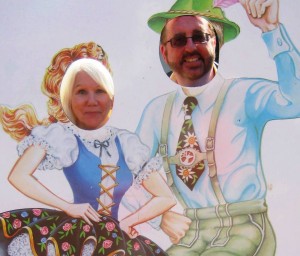Over the weekend, I was catching up on my email inbox and discovered this article about Baby Boomers from Mediapost.
Over half the audience to my radio station, WOWO radio is age 50 and older, nearly 80,000 weekly listeners. Number two according to the rating survey is WLDE with less than half that amount. Here’s why you as a business owner or marketing manager should care:
10 Key Facts Savvy Marketers Know About Boomers
by Mark Bradbury
Driving revenue in today’s ultra-competitive marketing landscape requires clear-thinking and objective decision-making. Chasing Millennials has proven to have limited payoff because that generation continues to have limited financial means. On the contrary, the case for Boomers and older consumers as the lifeblood of the American economy continues to grow. According to the U.S. Census, Americans 50+ now spend more on consumer products and services than those under 50.
Here are 10 more key facts making the case for Boomers as the most valuable generation for marketers today:
1. 50+ spend more per capita. People 50+ are responsible for 51% of all consumer spending. They represent just 45% of all adults, so we know they spend more per capita than younger adults—so much for the notion that spending slows down after age 50.
2. 50+ spend more across a variety of mainstream segments.That people 50+ spend more on healthcare than younger consumers is no surprise, but they are also responsible for a greater share of spending on new cars and trucks (57%), personal care products and services (53%), household furnishings and equipment (52%), and entertainment (51%).
3. 50+ spend more than Millennials and Gen X. People 50+ spent 3.3 trillion on consumer goods and services in 2014—that’s $200 million more than was spent by people under age 50.
4. 50+ were critical in lifting us out of the recession. Since the recession, consumer spending among people 50+ has increased $726 billion, while spending among people under age 50 has dropped by $238 billion, a clear indication the 50+ age group ushered us out of the recession and is keeping our economy stronger now.
5. 50+ continues to be a rapidly growing population. Over the next ten years, the 50+ population will grow by 15.2 million — nearly 3 times the rate of the 18-49 population, ensuring that the 50+ consumer will only become increasingly relevant across most product and service categories.
6. 50+ have a higher net worth. The median net worth of people 50+ is $304,000, which is 75% greater than it is for people age 18-49, $174,000.
7. 50+ own a majority of all investments. People 50+ own over 60% of all investments, including 68% of mutual funds, 70% of stocks, 76% of money market funds, and 89% of annuities.
8. 50+ support brick-and-mortar businesses. Over the past 3 years, 50+ have been kept a broad range of brick and mortar retailers in growth mode. During that period, Walmart gained 5.7 million more customers age 50+, 8 times the growth (700,000) of their 18-49 customer base. Other big brands garnered significant increases in 50+ customers, while watching their 18-49 customer bases drop, including: Home Depot (up 2.6 million 50+, down 2.1 million 18-49), McDonald’s (up 2.4 age 50+, down 7.6 million age 18-49), and Kohl’s (up 1.9 million 50+, down 1.9 million 18-49).
9. 50+ are avid online shoppers. Outside of using email, making purchases is the #1 online activity among people 50+. Much of this is happening on mobile devices. Half of all people 50+ now own smartphones, with double-digit growth over the past 2 years occurring among people 50-59 (+52%), 60-69 (+92%), and 70+ (+127%).
10. 50 will soon be the age of the average American. The average age of American adults is now 47, just 3 years shy of the age at which they will age out of the coveted 18-49 demo. By 2025, the average age of the American adult will be 50.
Due to our culture’s obsession with youth, Boomers will continue to cede the media spotlight to Millennials, but it will be a long time before they give up their spot as our nation’s dominant consumer group. Savvy marketers will prioritize evidence, not popularity, when deciding the best way to deliver profits and grow share of market.

